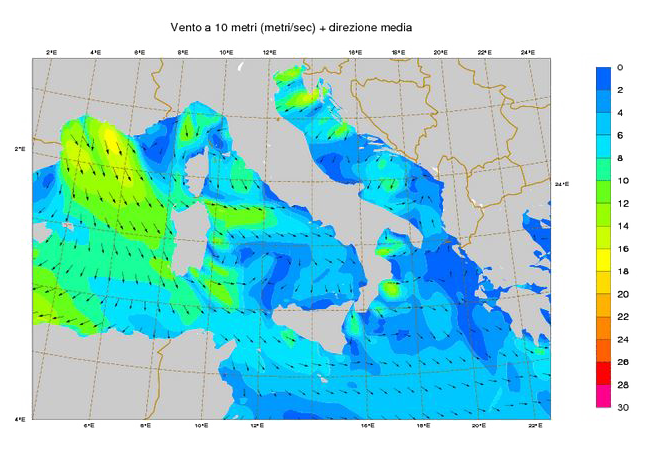Operational services for
monitoring EOVs and ECVs
ISMAR’s Earth Observation (OT) competencies include both a satellite remote sensing component and a multidisciplinary in situ component, which contribute in a complementary and cross-cutting way to the achievement of the Institute’s priority scientific objectives.
ISMAR’s OT activities are aligned with key challenges defined at the European and international levels, aimed at advancing basic knowledge about the mechanisms that regulate the Earth system’s climate and the functioning of marine ecosystems, the definition and development of innovative policies for the sustainable exploitation of marine resources, environmental protection and management of marine space, and the mitigation of risks associated with human activities and global change. ISMAR’s strategy therefore follows the principles defined by the Group on Earth Observations (GEO), whose primary objective is to build a Global Earth Observation System of Systems (GEOSS) that is capable of producing and analyzing the necessary information in support of decision-making and knowledge advancement for a variety of institutional, scientific and private users.
At the European level, the major contribution to GEOSS is clearly the Copernicus Program, to which ISMAR greatly contributes. ISMAR’s priorities in Sea Observation are continuously updated in order to strengthen its role not only in Copernicus, but in all programs and observational networks in which ISMAR already participates (SeadataNet, Seadatacloud, EMODnet, Jerico, EuroGOOS, IODP, GEBCO, CoCoNet, ESFRI), taking into account the most relevant initiatives at the European level, including the Joint Programming Initiatives on climate (JPI Climate), oceans (JPI Oceans), and water (JPI Water).
In this overall context, “Decade of Ocean Science for Sustainable Development,” represents a unique opportunity to strengthen observational components in support of achieving the goals set by the “2030 Agenda for Sustainable Development.” In order to achieve this goal, the 2019 IOC General Assembly approved the “GOOS Strategy for 2030,” a document that defines the goals and implementation plan for ocean observation to be implemented over the next decade. This strategy document, which the GOOS Steering Group and the GOOS Physical, Biogeochemical and Biological Panels have been working on for more than 5 years, identifies what the Essential Ocean Variables (EOVs) are and the measurement requirements for each of the EOVs. The Ocean Decade will provide a unique opportunity to develop new lines of research and innovative observational technologies and to further strengthen ISMAR’s international collaborations and contribute to the GOOS implementation plan.
ISMAR’s strategies for Earth Observation will be aligned with the GOOS Strategy and will also need to respond to the priorities of the Mediterranean marine and maritime sectors, as identified under the BLUEMED initiative and its Coordination Support Action (BLUEMED-CSA).
